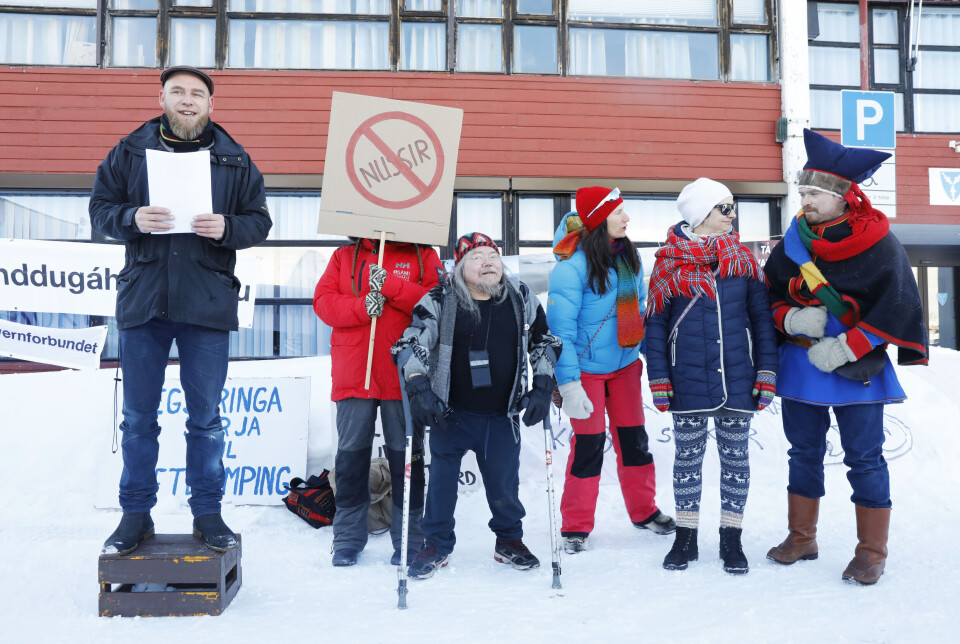THIS CONTENT IS BROUGHT TO YOU BY NUPI - Norwegian Institute of International Affairs - read more
How Norway and the EU can collaborate in the minerals and battery sector
What opportunities might this partnership present? A new report offers 10 recommendations.

Norway and the EU will collaborate in the minerals and battery sectors.
But what opportunities – and challenges – might this partnership present?
Research Professor Kacper Szulecki from the Norwegian Institute of International Affairs (NUPI), along with three former graduate students, explores these questions in a new report.
Batteries are a core element of the EU's climate goals
The demand for batteries is expected to rise dramatically as more sectors transition to electrification.
The European Commission aims to lead global climate efforts. However, the EU remains highly dependent on imports of critical raw materials such as cobalt, lithium, and nickel. These resources are currently produced primarily in Asian countries, particularly China.
To reduce the risks linked to foreign dependency, the EU is accelerating efforts to secure access to battery-related resources within Europe.
“For Norway, which possesses some of these critical resources, this presents an opportunity to develop both a strategically important and profitable mining industry while also strengthening its presence in key areas of the battery value chain,” says Kacper Szulecki.
Norway as a strategic partner
“As a supplier of clean energy and critical minerals, Norway is a preferred partner for the EU,” says Szulecki.
Norway produces nickel, cobalt, and graphite. These substances are essential for green technologies, such as batteries for electric cars.
The country's mineral reserves and growing battery industry could play a significant role in securing strategic raw materials for the EU.
However, the report highlights the need to improve both national and international regulations to fully realise this potential.
The EU’s Critical Raw Materials Act (CRMA) and Norway’s Green Industrial Initiative are examples of measures already in place. Nonetheless, the report highlights that Norway must align its regulations with EU standards to enable more effective collaboration.
Norway is not a member of the EU. Nor is it always aligned with EU regulations. This can lead to challenges in accessing the European market.
Szulecki explains that when the EU negotiated a post-Brexit agreement with the UK, this also impacted Norway's battery industry. The reason was that Norway was initially treated as a 'third party.'
"It's crucial for Norway to be fully integrated into the EU market and maintain full access,” he says.
Challenges and local conflicts
Three major mining projects in Norway highlight the complixities surrounding the extraction of critical minerals. These are: Nussir (copper), Nordic Mining (rutile and garnet), and Skaland Graphite (crystalline graphite).
These projects face opposition from local communities and indigenous groups. They also encounter regulatory and environmental obstacles.
"Balancing economic growth with environmental protection is essential," says Szulecki.
He stresses the need for conflict resolution and the inclusion of all stakeholders in the policymaking process for such projects.
In the report, the researchers conclude that closer cooperation between the EU and Norway is essential for achieving a successful green transition.
With the right policy measures, both parties can reap economic and environmental benefits while reducing their vulnerabilities in an increasingly complex geopolitical landscape.
Reference:
Szulecki et al. EU-Norway Green Alliance between vision and reality: Exploring the potential and barriers in the critical minerals and battery sectors, Report from NUPI, 2025.
The research for this report and writing of the first draft was conducted while A.S.L., B.L. and P.L.G. were graduate students at the University of Oslo. All further research, writing and editing, as well as the final formulation of policy recommendations was conducted by K.S.

This content is paid for and presented by NUPI
This content is created by NUPI's communication staff, who use this platform to communicate science and share results from research with the public. The Noprwegian Institute of International Affairs is one of more than 80 owners of ScienceNorway.no. Read more here.
More content from NUPI:
-
How Iran’s regime exploits emotions to crush protests
-
Improving the impact of the UN Peacebuilding Commission
-
Controversial calories: How do we measure hunger?
-
Nigerian authorities plan to close refugee camps housing a million people
-
How Central Asia can help the global energy transition
-
Reduced influence in the Arctic?





































